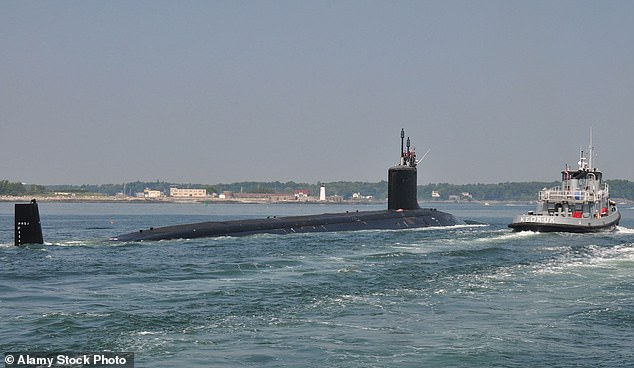Norwegian sailors setting out on a routine fishing expedition made an unexpected and highly sensational catch earlier this week when they managed to trap a US nuclear-powered attack submarine.
The Øygutt, or ‘Island Boy’, a modest fishing vessel measuring 10 meters in length, left the harbor of the beautiful village of Sommarøy, high above the Arctic Circle, on Monday.
After hauling in hundreds of kilos of fish that morning in a lucrative catch worth around £1,500, they re-set the nets for a second load.
But moments later, the trawl gear was torn from the side of the ship by the unsuspecting USS Virginia – a fast attack giant of 7,800 tons and 115 meters in length.
The state-of-the-art submarine – the leading ship in its class – was sailing silently through the waters northeast of Sommarøy after recently leaving the Arctic city of Tromsø when it accidentally dragged along the entire line of halibut nets.
Harald Engen, one of the three-man crew aboard Øygutt, told Norway’s NRK how they had just re-set the nets and were heading for shore when the coast guard radioed in on VHF channel 16.
“A submarine had gotten into our halibut nets and dragged them two nautical miles north into the open sea,” Engen said, still in disbelief.
The trawl gear was torn from the side of the ship by the unsuspecting USS Virginia – a fast attack giant of 7,800 tons and 115 meters in length.
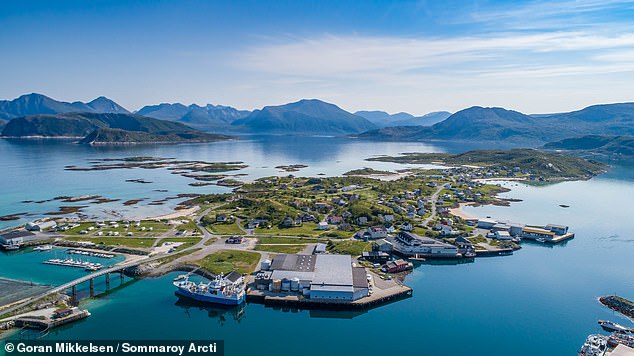
The Øygutt, or ‘Island Boy’, a modest fishing vessel of 10 meters in length, left the harbor of the beautiful village of Sommarøy, high above the Arctic Circle, on Monday
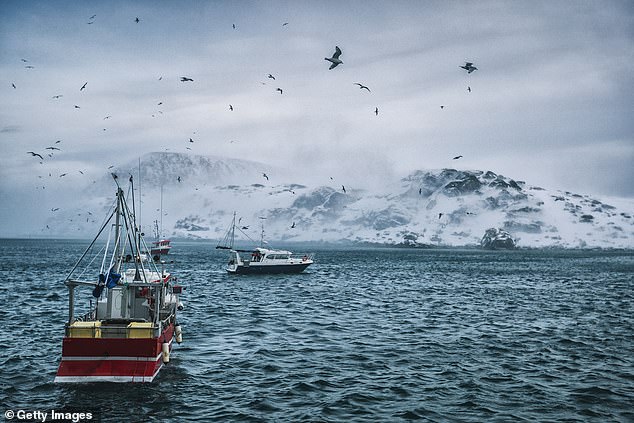
The small fishing boat was of course no match for the ultra-modern submarine (stock image)
The young fishermen now have an excellent story to tell, but lament the destruction of their nets, which are now lost at the bottom of the sea.
Naturally, the small fishing boat was no match for the state-of-the-art submarine, which tore the nets from its hull before calling for help.
Although their first catch of halibut and plaice brought them more than 20,000 Norwegian krone, the nets torn away by the USS Virginia are worth about 40,000 to 50,000 kronor.
‘It (net) is at the bottom of the sea. It has disappeared and we will probably never find it again,” a pained Engen told The Barents Observer.
The US Navy’s nuclear submarines are rarely seen so close to the surface, making this incident all the more unusual.
“I know of other ships that have run over fishing nets, but no one here has ever heard of a submarine doing that,” Engen said.
The USS Virginia, part of a class of fast attack submarines, is also equipped with advanced sonar and stealth technology, capable of reaching extreme depths and carrying a range of torpedoes and Tomahawk missiles.
But despite all its advanced equipment, even this advanced ship was torpedoed by a simple fishing net.
Fortunately, the Norwegian Coast Guard was able to deploy aboard the ship Heimdal and cut the yarn from the submarine’s propeller.
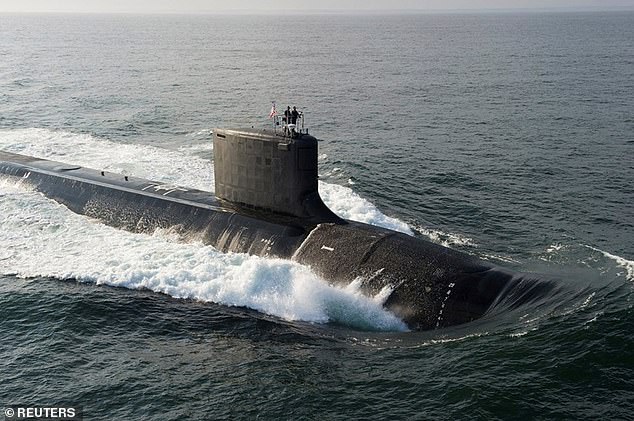
The USS Virginia and its counterparts are part of the US Navy’s 6th Fleet, a forward-deployed unit responsible for missions throughout Europe and Africa, including the so-called ‘High North’ (Virginia-class USS North Dakota is pictured)
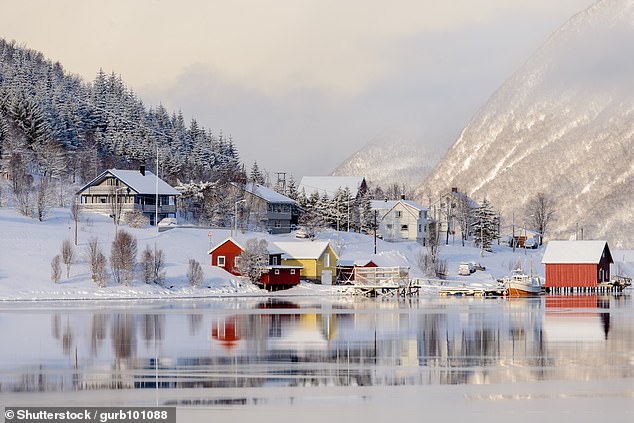
Traditional houses in Sommarøy, Norway
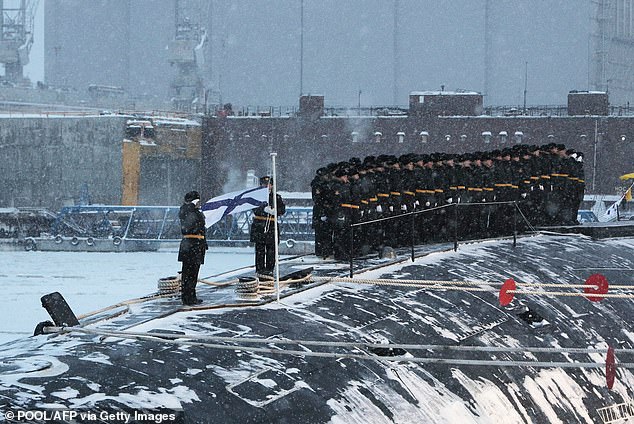
Image shows the new Russian nuclear submarine during a flag-raising ceremony led by Vladimir Putin in the Arctic port of Severodvinsk on December 11, 2023
The USS Virginia and its counterparts are part of the U.S. Navy’s 6th Fleet, a forward-deployed unit responsible for missions throughout Europe and Africa, including the so-called “High North.”
The 6th Fleet regularly conducts operations in the Arctic and North Atlantic, given the emergence of the Arctic as a strategically vital region.
Norway, one of the best equipped and advanced countries in Europe and NATO in its mastery of exploration, research and military operations in the Arctic, works closely with the US and regularly hosts these submarines, often for resupply or to undergo maintenance.
Every two years, Norway also organizes ‘Nordic Response’: a series of large-scale military exercises led by its armed forces in cooperation with troops, air forces and navies from various NATO countries.
In a statement following this week’s incident, the U.S. 6th Fleet expressed gratitude to Norway for its continued support and acknowledged Heimdal’s assistance in freeing the submarine.
“We appreciate Norway’s continued support for the deployment of U.S. submarines, which are essential to deter and defend against an increasingly complex security environment,” a Navy spokesperson said.
The Arctic has been considered a potential theater of war since the Cold War, as the US and the Soviet Union both recognized that the most direct route for a nuclear attack on the other was the North Pole.
Since then, they have maintained a robust submarine presence in the region.
But as the Arctic undergoes unprecedented changes due to climate change, the melting of the ice opens a vast new frontier, unlocking a wealth of previously untapped natural resources, new trade routes and strategic superiority.
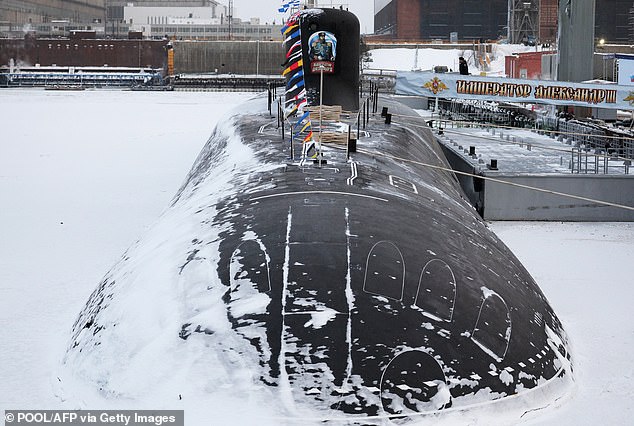
The new Russian nuclear submarine Alexander III is pictured during a flag-raising ceremony led by the Russian President in the Arctic port of Severodvinsk on December 11, 2023
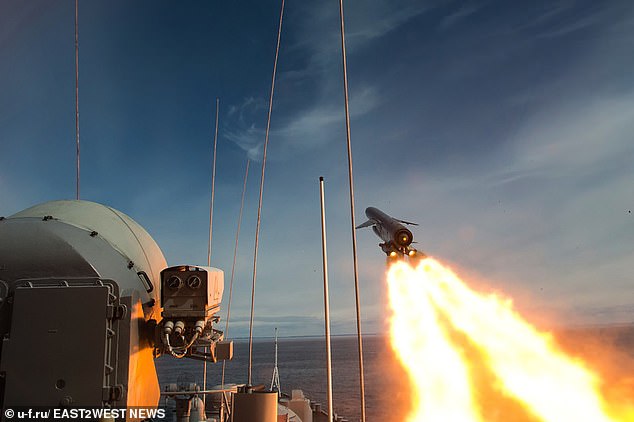
Russia’s Admiral Gorshkov frigate fires a hypersonic Tsirkon missile into the Barents Sea
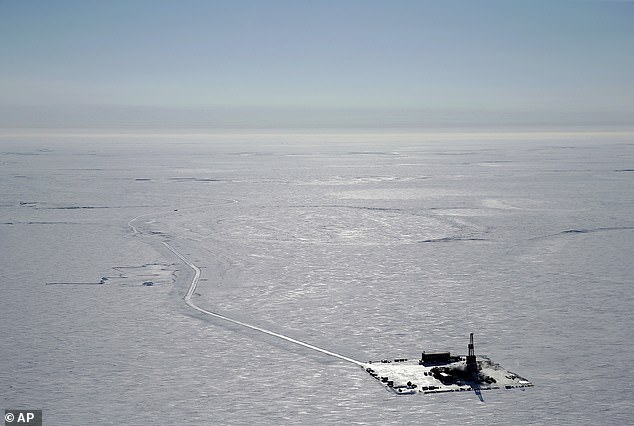
This 2019 aerial photo provided by ConocoPhillips shows an exploratory drill camp at the proposed site of the Willow oil project on Alaska’s North Slope
While the West faces numerous challenges in asserting its interests in the High North, Russia has strategically positioned itself at the head of the race for Arctic dominance.
One of the key areas where Russia has taken the lead is in icebreaker technology.
Icebreakers are indispensable tools in navigating the icy waters of the Arctic, and Russia has the largest and most advanced fleet in the world, exemplifying its commitment to controlling new shipping lanes and exploiting new arenas for extraction of resources.
“Russia has a significant advantage (in the Arctic) with dozens of active icebreakers, including nuclear-powered variants. China is also building up its fleet,” said RAND Europe defense analyst and European security expert Nicolas Jouan.
‘Britain and the US have one and two active icebreakers respectively. This is probably the most significant capability gap between NATO and its competitors today.”
Russia has also invested huge sums in developing military infrastructure around the Arctic Circle since 2014.
More than 50 Soviet-era Arctic bases, including airfields, radar stations, cargo ports, missile launch pads and naval yards, have been renovated, while others – including dozens of airfields on the Kola Peninsula some 200 miles east of Finland – have been expanded to provide shelter to larger military forces, including nuclear bombers and missiles.
Some have been adapted to house Moscow’s state-of-the-art military technology – the Plesetsk Cosmodrome was used for a test launch of Russia’s latest satellite-killer missile in 2021 and was used in 2022 to launch Sarmat-2, one of its missiles. most terrifying intercontinental ballistic missiles.
And Russia’s nuclear arsenal is embedded in the Northern Fleet, whose headquarters are in Severomorsk, a city within the Arctic Circle.
Rob Clark, a British army veteran who now heads the defense research team at British think tank Civitas, told MailOnline: ‘We need to wake up to the threat posed by Russian expansion in the Arctic – while all eyes are on Ukraine Russia is testing new nuclear submarines and hypersonic missiles in the Arctic and building up its presence in the region.’
But Russia is not just increasing its technological and military capabilities in the north; the country is also working to destabilize the operations of other Arctic nations through a mix of cyberattacks and disinformation campaigns.
Alaska, Norway, Canada and Finland have all suffered a wave of cyber attacks they say were authored by Russia in the past three years, while other areas such as Iceland and Greenland have reported an increase in ‘suspicious internet traffic’ since the invasion of Ukraine in February 2022.


